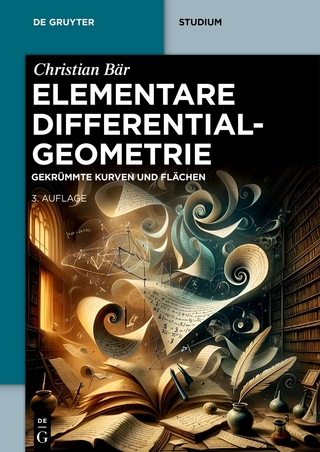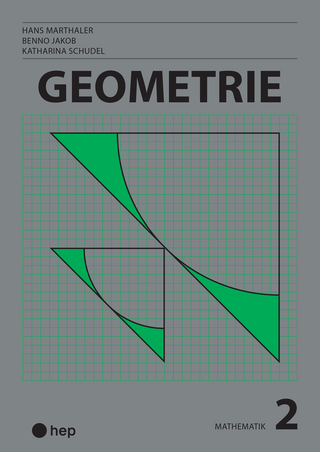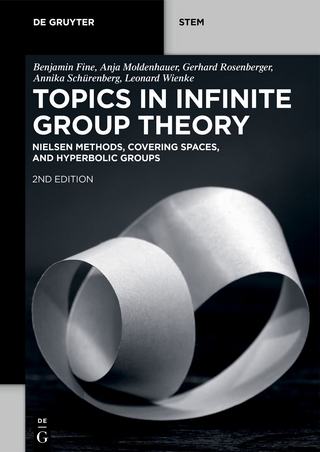
Cell and Muscle Motility
Kluwer Academic / Plenum Publishers (Verlag)
978-0-306-40798-7 (ISBN)
- Titel ist leider vergriffen;
keine Neuauflage - Artikel merken
We are all indebted for this generous gift that made this enriching educational experience possible. We are also grateful for support the Symposium received from Electron Microscopy Sciences, Forma Scien- tific, J. E. O. L. USA, Inc. , Ladd Research Industries, M. J. O. Diatome Co. , Or- ganon Co. , Upjohn Co. , G. D. Searle & Co. , and Smith, Kline and French. Robert M.
1 Actin Organization as an in Vitro Assay for Tumorigenicity.- 1. Introduction.- 1.1. Actin Organization and Oncogenic Transformation.- 1.2. Actin Organization and Human Cancer.- 2. Methods.- 2.1. Cells and Culture.- 2.2. Anchorage Independence.- 2.3. Fixation and Staining for Localization of Actin by Antibody Immunofluorescence.- 2.4. Fixation and Staining for Localization of Actin by Fluorescent Phalloidin.- 2.5. Fluorescence Microscopy.- 2.6. Specificity of Fluorescent-Phalloidin Stain.- 2.7. Photography.- 3. Results and Discussion.- 3.1. Fluorescent Phalloidin Permits Quantitation of Actin Patterns.- 3.2. Tumorigenicity and Fluorescent-Phalloidin Patterns.- 3.3. Organization of Actin in Human Skin Fibroblasts.- 3.4. Asymptomatic Children of Patients with Adenomatosis of the Colon and Rectum.- 3.5. Actin Organization vs. Age of Patients.- 4. Conclusions.- References.- 2 The Mechanism of Actin-Filament Assembly and Cross-Linking.- 1. Introduction.- 2. Molecular Structure.- 3. Filament Structure.- 4. Filament Formation.- 5. Regulation of Actin Polymerization.- 6. Actin-Filament Networks.- 7. Structure of Actin-Filament Gels.- 8. Actin-Microtubule Interactions.- 9. Perspectives.- References.- 3 A Scanning and Transmission Electron Microscope Examination of ACTH-Induced "Roundingup" in Triton X-100 Cytoskeleton Residues of Cultured Adrenal Cells.- 1. Introduction.- 2. Materials and Methods.- 2.1. Cells.- 2.2. Methods.- 3. Results and Discussions.- References.- 4 The Role of Tubulin in Steroidogenesis of Mouse Adrenal Y-l Cells and Rat Leydig CCL 43 Cells.- 1. Introduction.- 2. Materials and Methods.- 2.1. Cell Lines.- 2.2. Antibodies and Indirect Immunofluorescence.- 2.3. Transmission Electron Microscopy.- 2.4. Cell Fractionation.- 3. Observations.- 4. Discussion.- References.- 5 Use of Monoclonal Antibodies to Study Cytoskeleton.- 6 Interaction of Calcium -Calmodulin in Microtubule Assembly in Vitro.- 1. Introduction.- 2. Materials and Methods.- 2.1. Preparation of Microtubule Protein.- 2.2. Preparation of Calmodulin.- 2.3. Assay of Microtubule Polymerization.- 2.4. Stellazine.- 2.5. Other Procedures.- 3. Results.- 4. Discussion.- References.- 7 Microtubules in Adult Mammalian Muscle.- 8 Microtubules and Heart-Cell Contraction.- 1. Introduction.- 2. Materials and Methods.- 3. Results.- 3.1. Inhibition of Myocyte Contraction.- 3.2. Relationship of Microtubules and Myocyte Contraction.- 3.3. Intercellular Organization.- 4. Discussion.- References.- 9 The Association of Creatine Phosphokinase with the Mitotic Spindle.- 1. Introduction.- 2. Material and Methods.- 2.1. Myocyte Isolation.- 2.2. Immunocytochemistry.- 2.3. Cold Treatment of Cells.- 2.4. Microscopy.- 3. Results.- 3.1. Prophase.- 3.2. Prometaphase.- 3.3. Metaphase.- 3.4. Anaphase.- 3.5. Telophase.- 4. Discussion.- References.- 10 Cytoskeletal Defects in Avian Muscular Dystrophy.- 1. Introduction.- 2. Materials and Methods.- 3. Results.- 4. Discussion.- References.- 11 The Structure of Vertebrate Skeletal-Muscle Myosin Filaments.- 1. Introduction.- 2. Subfilament Spacing.- 3. Parallel Subfilaments.- 4. Threefold Symmetry.- 5. Subfilament Arrangement and Number.- 6. Sources of Artifacts.- 7. Minifilaments.- 8. Tapered Ends of the Filaments.- 9. Differences in Structure along the Length of the Filaments.- 9.1. Optical-Diffraction Studies of Transverse Sections.- 9.2. Restriction of C-Protein Binding to Specific Positions along Only a Portion of the Filament.- 9.3. Restriction of Specific Anti-Light Meromyosin Staining to Only a Portion of the Filament.- 9.4. Filament Length as a Function of KCl Concentration.- 10. Modeling.- 10.1. Organizational Units of Structure.- 10.2. Speculations on Structural Differences along the Filament.- References.- 12 Cross-Bridge Movement and the Conformational State of the Myosin Hinge in Skeletal Muscle.- 13 The Regulation of Myosin-Light-Chain Synthesis in Heterokaryons between Differentiated and Undifferentiated Myogenic Cells.- 14 Phosphorylation of Myosin and the Regulation of Smooth-Muscle Actomyosin.- 1. Introduction.- 2. Contractile Apparatus.- 2.1. Content of Contractile Proteins.- 2.2. Properties of the Contractile Proteins.- 3. Regulation.- 3.1. Requirement for Regulation.- 3.2. Phosphorylation Theory of Regulation.- 3.3. Leiotonin Theory of Regulation.- 3.4. Summary of the Regulatory Mechanism in Smooth Muscle.- References.- 15 Three-Dimensional Structure of Muscle Membranes Involved in the Regulation of Contraction in Skeletal-Muscle Fibers.- 1. Introduction.- 2. Historical Background.- References.- 16 Mechanism of the Apparent Inhibitory Effect ofMgp2+ and Cap2+ on the Actomyosin MgATPase in Relation to the L2 Light Chain.- 1. Introduction.- 2. Methods.- 3. Results and Discussion.- 4. Conclusions.- References.- 17 Actin Activation of Phosphorylated Aortic Myosin.- 1. Introduction.- 2. Materials and Methods.- 3. Results.- 4. Discussion.- References.- 18 The Regulation of Cardiac-Muscle Contraction by Troponin.- 1. Introduction.- 2. Cap2+ Binding to Cardiac Troponin (CTn) and the Regulation of Contraction.- 2.1. Cap2+ Binding to Cardiac Troponin, Troponin-C, and Troponin C-Troponin-I Complex.- 2.2. Relationship of Troponin Cap2+ Binding to the Activation of Myofibrillar ATPase.- 2.3. Role of Cyclic-AMP-Dependent Phosphorylation of CTnl in the Regulation of Muscle Contraction.- 3. Interactions of Cardiac-Thin-Filament Proteins in the Regulation of Muscle Contraction.- References.- 19 Fluorescent-Probe Studies of Contractile Proteins.- 1. Introduction.- 2. Physical Principles of Fluorescence Techniques.- 2.1. Background.- 2.2. Time-Resolved Fluorescence Anisotropy Decay.- 2.3. Polarized Fluorescence from Fibers.- 3. Experiments on Myosin and Its Complexes.- 3.1. Background.- 3.2. Segmental Flexibility of Subfragment-1.- 3.3. Lack of Effect of Cap2+ on the Thick Filaments.- 3.4. Mobility and Orientation of Subfragment-1 Moieties in Myofibrils and Muscle.- 4. Summary.- References.- 20 Myosin Flexibility.- 1. Introduction.- 1.1. Sliding-Filament Model and Myosin Flexibility.- 2. Hinge between Subfragment-1 and the Rod.- 2.1. Studies on Single Molecules.- 2.2. Studies on Synthetic Filaments and Whole Muscle.- 3. Flexibility within the Rod.- 3.1. Evidence for Flexibility.- 3.2. Evidence That Bending Is Limited.- 3.3. Discussion on Rod Flexibility.- 4. Summary.- References.
| Erscheint lt. Verlag | 31.3.1982 |
|---|---|
| Zusatzinfo | 72 black & white illustrations, biography |
| Verlagsort | Dordrecht |
| Sprache | englisch |
| Themenwelt | Mathematik / Informatik ► Mathematik ► Geometrie / Topologie |
| ISBN-10 | 0-306-40798-1 / 0306407981 |
| ISBN-13 | 978-0-306-40798-7 / 9780306407987 |
| Zustand | Neuware |
| Haben Sie eine Frage zum Produkt? |
aus dem Bereich


